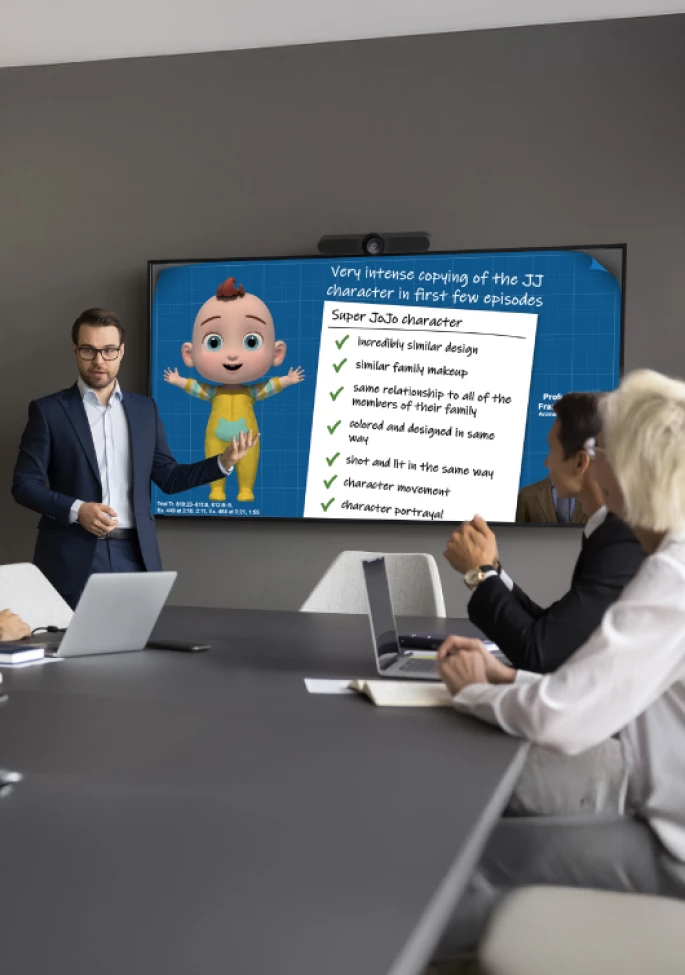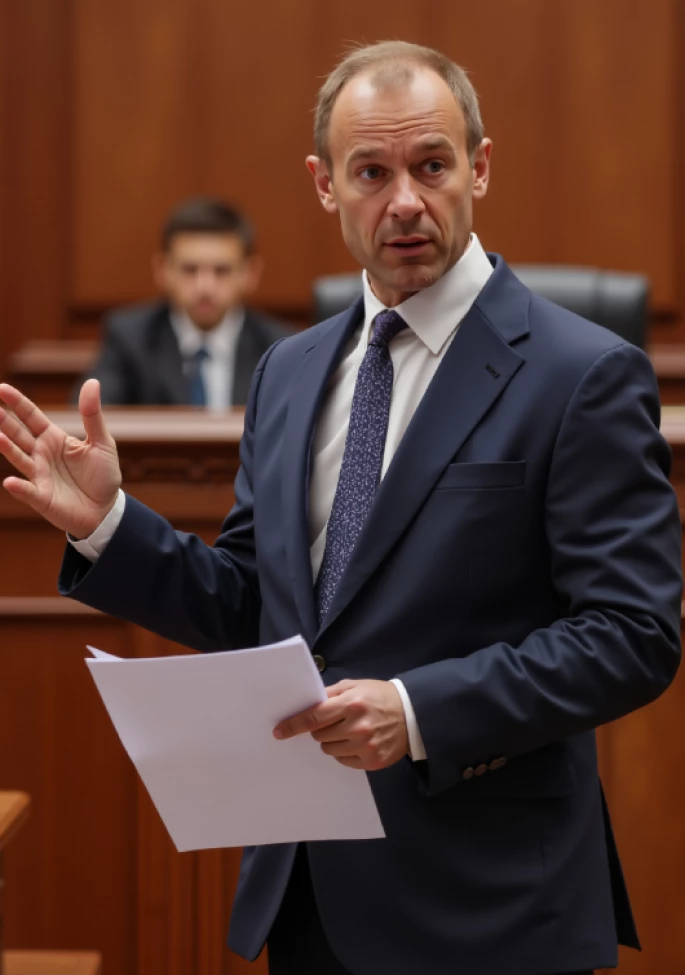While views may vary, we believe firmly that witness preparation should involve asking witnesses the tough questions, for several reasons:
First, we would argue it is better to pose a tough or uncomfortable question up front—and prepare witnesses for it during the real deposition or trial testimony—than to coddle them into a false sense of security only to risk implosion when that question comes at them from an aggressive opposing counsel. Second, it allows us to assess whether witnesses are experiencing psychological “noise” or second-guessing in their own heads, which stands to affect how jurors perceive their delivery and, ultimately, their credibility.
More specifically, witnesses faced with speculative or tricky lines of questioning from opposing counsel may inadvertently engage in hindsight bias—a tendency to use the knowledge of an outcome to judge retrospectively the actions/decisions that allegedly led to that outcome. Common phrases like “Hindsight is 20/20” and “Monday-morning quarterback” emerge from this psychological phenomenon.
Hindsight affects us all, and that certainly includes jurors. But, for our purposes here, the common consequences of a witness engaging in hindsight bias are: 1) the witness believes an outcome was more avoidable or predictable than it really was at the time, and 2) they believe they or their company should have acted differently as a result.
This article will discuss what these problematic thought processes look like during witness preparation and how to help witnesses overcome hindsight thinking.
An Example of Witness Hindsight Bias
Our team assisted with the preparation of several witnesses whose organization had been accused of engaging in a violation of certain standards. The stakes were high, and it was a very touchy subject. As there was no direct evidence, the investigation was riddled with ambiguities. But, as investigations go, employees high and low were asked questions even if they were not involved in the act or incident at issue.
After reviewing the witness preparation preliminaries with one of the witnesses, we came right out with the tough question: “Mr. Jones, do you believe [Organization] did something wrong?” He stated, “Yes.” We followed with, “Do you believe the director of [Organization] did something wrong?” His response: “Yes, I believe so.”
Counsel was shocked—particularly because this witness had no evidence or direct information about the incident. The first problem here was that this witness strayed from his personal “puzzle piece” when testifying; he appeared to go beyond his scope of knowledge or expertise, and as a result put his witness credibility at risk.
But the second problem was that he was engaging in hindsight bias at the same time. How did we know? By unpacking what was behind his answers: we asked, “Why do you think that?” and he replied, “I wouldn’t be here in witness prep if we probably didn’t do something wrong.”
Answers like this reflect one of the most concerning forms of hindsight bias, and it is surprisingly common in witnesses. They take what they know (or what they think they know) and impose it on the facts of the case, making the accused behavior seem more likely.
Undoing Witness Hindsight
Hindsight is one of the most difficult cognitive biases to undo. Scholars have tried various strategies and found that only a few methods work. (Stallard & Worthington, 1998; Worthington & Pitera, 2012)
One such strategy is based on the dissertation of this article’s co-author, Dr. Merrie Jo Pitera. The premise was that while you cannot violate the “golden rule” and ask jurors to put themselves in the shoes of the person who made the decision, you can remind jurors of the information available to that person at the time the decision was being made. The study went on to find this specific strategy was effective in helping jurors see the outcome was not so obvious to the person at the time. (Pitera-Stallard, 1996)
Our consultants have since used this strategy successfully to help witnesses overcome their own hindsight. We ask them to recall what was known at the time—not what they think should have been known.
To break down the process you can use to try to combat a witness’ hindsight, consider another real-world example:
Identifying the Problem
As we began witness preparation with the defendant company’s HR director (“Mr. Smith”) in an employment discrimination case, we were quickly introduced to his awful attitude. He was angry, defensive, and loud; he would lean forward aggressively in his chair, even yell at us while giving his answers to direct examination questions. This was friendly questioning, too—a simple attempt to elicit testimony about the company’s policies and protocols, how employee complaints were handled by the HR department, and the general workplace culture. And his behavior only got worse on cross; in other words, it was not a good look for a director of human resources.
This was despite the fact that, by all accounts, Mr. Smith had performed his HR duties to a T in this case. Over the years, the plaintiff had complained to HR about a couple of incidents, and the defense’s timeline could show that any time the plaintiff had complained previously, HR had ensured the aggravating behavior stopped immediately. Meanwhile, the plaintiff had never once mentioned the particular instances he was now claiming were discriminatory—that is, until filing a lawsuit.
It was obvious there was something more going on in Mr. Smith’s head. So, we took a break and pulled him aside: “Help us understand, what is the message you want to communicate to the jury?” He suddenly burst out, “This plaintiff is a charlatan!”
In the conversation that followed, he revealed that he believed his tone would express to the audience just how ridiculous he thought the litigation was. He thought showing his anger would help people see that the plaintiff’s case was utterly frivolous. We explained that, while we understood, this was not at all the message that was coming across; angry witnesses tend to have a very negative effect on a jury audience.
Unpacking the Noise
Making the witness aware of an issue is usually just the beginning. We have learned over decades of witness preparation that many witnesses have a dialogue in their head that impacts their answers (something we often refer to as “noise.”) Much of witness coaching can therefore be a counseling session of sorts—a conversation geared toward quieting this noise by providing a catharsis, a chance for witnesses to get what is bothering them out into the open and lift the weight off their shoulders.
In Mr. Smith’s case, through a number of gentle, open-ended questions, we worked to learn more about the origin of his anger. For example:
- “What makes you feel that way about the plaintiff?”
- “How do the plaintiff’s claims make you feel, given your role in HR?”
And ultimately…
- “What do you believe you did wrong?”
- “Why do you believe that?”
The reality, we discovered, was that his anger was not pointed solely at the plaintiff. Mr. Smith was engaging in hindsight bias and blaming himself for the whole litigation. This particular company had its headquarters, including the HR department, located in another state from where the claimed events occurred. And because he was not there in person, Mr. Smith was internalizing that, somehow, whatever happened was his fault. He was telling himself that if he had only been on the premises to monitor the conditions and the employees on site, he could have had an impact. If an employee was suing for discrimination, he must have failed in his job as the HR director.
So, what did we do to coach this witness? We first helped him understand his individual puzzle piece in the events—his location, his responsibilities, and his actions. We reminded him about all the policies and resources the company had in place to address potential discrimination. It had provided the plaintiff the means to make a complaint at any time—just as he had done before—and it had properly addressed any previous issues. Yet, the plaintiff chose not to use those resources this time around.
Here, too, is where hindsight-combating strategy came into play: ignore the outcome, ignore the litigation. “What did you know at the time? What could you do at the time?” With that new framing, Mr. Smith realized that neither he nor the company could have done anything more; they could not have responded to what they did not know. That same logic helped to counter Mr. Smith’s laments about being located in another state; even working at the same facility, he still would not and could not have known anything without a complaint being made.
Lastly, in Mr. Smith’s particular case, we offered him an extra tool. If he felt concerned about his anger and frustration bubbling up, he could focus his thoughts on a happy memory (of his grandkids).
The Result
Subsequent questioning with Mr. Smith resulted in noticeably calmer behavior. And when we asked some of the tough questions, like “Would you have done something differently?”, he was able to keep anger out of the equation and think realistically about his role: “No, based on the information available to me at the time, I performed my job.” When we pushed harder with a hypothetical, “If only you knew X information…”, he could answer with a cool head, “That information was not knowable at the time, as the plaintiff never made a complaint about it. Unfortunately, we cannot respond to something we do not know about.”
Orienting this witness to what he knew and what he was able to do at the time helped him appreciate how hindsight was warping his emotions and his understanding of his role in the case events. The result of his personal mental noise was to lash out, greatly affecting his witness credibility, but even more concerningly, it was affecting the truth about what he and the company could reasonably have done. By unpacking his guilt and giving him a fallback tool, we helped Mr. Smith to come across as the HR director he actually was: kind, caring, and calm.
Final Thoughts
It is imperative to spend time with your witnesses to address the noise in their heads. Give them a comfortable and judgment-free space to divulge any lingering concerns that may impact their answers. Lastly, keep in mind that some witnesses feel more open to disclosing this information to a third party, like a witness coaching expert, than to an attorney. We encourage you to reach out to us if you would like assistance with your next witness preparation.
References
Pitera-Stallard, M.J. (1996). When jurors use the past to decide the future: A study to reduce hindsight bias in the courtroom (Doctoral dissertation, University of Kansas, 1996). Dissertation Abstracts International, 58(03), A9541447.
Stallard, M.J. & Worthington, D.L. (1998). Reducing the hindsight bias utilizing attorney arguments. Law and Human Behavior, 22, 671-683.
Worthington, D. L., & Pitera, M. J. (2012). Hindsight bias, juror decision-making, and courtroom communication. In M. T. Motley (Ed.),Forensic communication: Application of communication science to courtroom litigation (Chapter 6, pp. 107-124), Hampton Press.
View this article on The National Law Review here: Trial Prep: Helping Witnesses Overcome Hindsight Bias (natlawreview.com)








